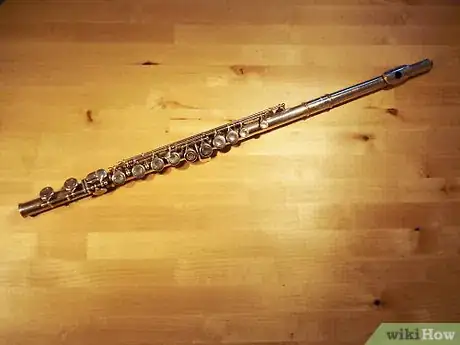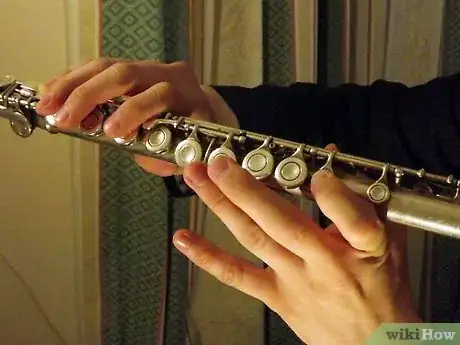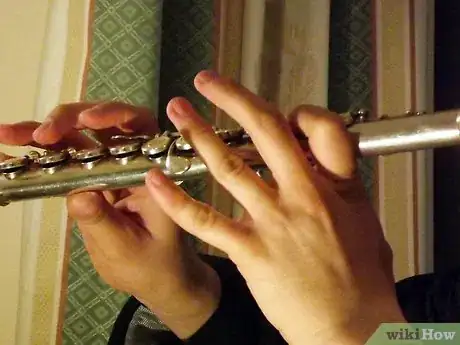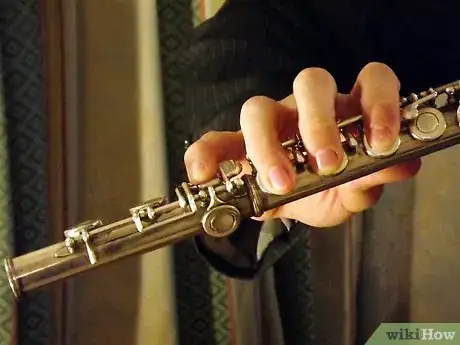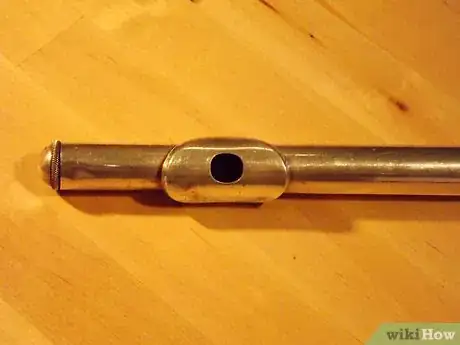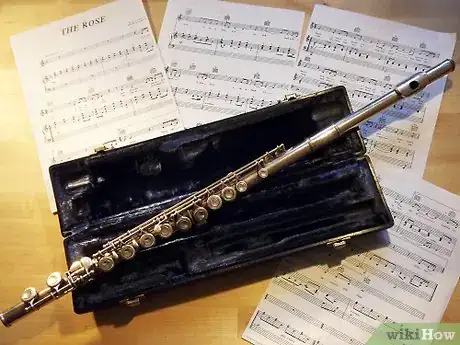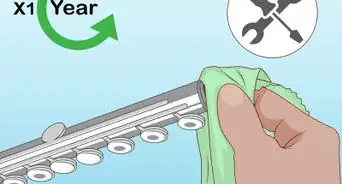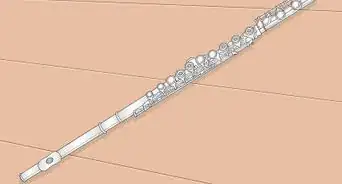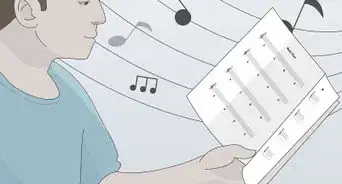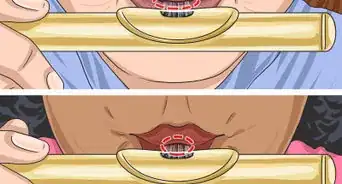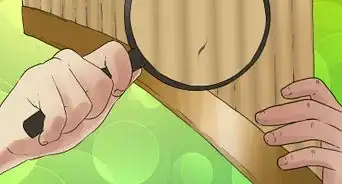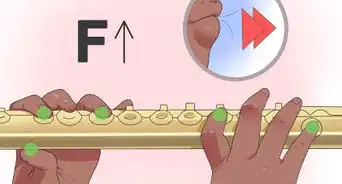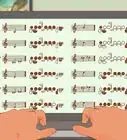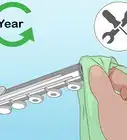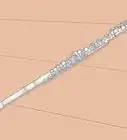X
wikiHow is a “wiki,” similar to Wikipedia, which means that many of our articles are co-written by multiple authors. To create this article, 42 people, some anonymous, worked to edit and improve it over time.
This article has been viewed 125,938 times.
Learn more...
On a flute, the lower notes can be harder to play than the higher ones. It just depends on what kind of flute player you are. You could have more trouble playing higher notes than lower notes. Here are some suggestions for making low range notes sound good.
Steps
-
1Make sure your flute is working correctly and that all of your pads are sealed. A friend, teacher, or music shop employee can check and see if your flute is fully functional. An instrument repair shop can help identify and correct leaks.
-
2Play in a medium register to warm up.Advertisement
-
3Drop the corners of your mouth, as if you were frowning. When you are blowing to produce a lower note, you need to blow at a steeper, downward angle.
-
4Start on a higher note, and descend on any scale until you reach the desired low note. Try to crescendo into the note. Also try slurring down from a note a step or so above the note you wish to play.
-
5Practice and experiment with tone the lowest notes you can play. Notice what makes them sound fullest and what makes the attacks cleanest.
-
6Work your way toward lower notes a little at a time.
-
7Practice playing low notes, starting with a full breath, and maintaining an even tone until the breath is almost gone. Listen to the sound! Is it full and rich? Thin and metallic? None of these are "good" or "bad", but thinking about the quality of tone, will help you learn to get the sound you want.
-
8Consider taking private lessons. Ask your band teacher or a music shop to recommend a private teacher for you.
-
9Pressing the flute closer to your mouth makes lower notes clearer.
-
10Make sure that you are blowing more and slower air that is pointed downward.
-
11Make sure your embouchure (lip and mouth shape) is more of an oval shape than a round shape when playing lower notes. The embouchure for middle range notes should be a bit more circular and for the high notes, it should be a small circle.
-
12Practice. Low notes are difficult and you probably will not get them just right on your first try.
-
13Be relaxed at all times, no matter which notes you are playing.
Advertisement
Community Q&A
-
QuestionIs playing low notes on an alto flute different than on a concert flute?
 Community AnswerNo. Every fingering is the same. However, because the alto flute is quite lower, you will need to relax your mouth and breathe slower.
Community AnswerNo. Every fingering is the same. However, because the alto flute is quite lower, you will need to relax your mouth and breathe slower. -
QuestionAt my school during rehearsal, I can reach all the notes on the bottom part of the staff. When I'm at home, I can't even hit a low A. Why?
 Community AnswerMake sure your flute is in good condition, first. If everything works, try relaxing your mouth. Go from your lowest note and add a finger. Just remember to relax and breathe slowly. If all else fails, try turning your mouthpiece slowly away from you and then back until you get the right note.
Community AnswerMake sure your flute is in good condition, first. If everything works, try relaxing your mouth. Go from your lowest note and add a finger. Just remember to relax and breathe slowly. If all else fails, try turning your mouthpiece slowly away from you and then back until you get the right note. -
QuestionHow do I transition from notes like E-flat to higher ones without going to the low notes?
 Community AnswerTo transition to the higher notes, you need to have a fast and full air going through it. Don't drop the steadiness of your airflow.
Community AnswerTo transition to the higher notes, you need to have a fast and full air going through it. Don't drop the steadiness of your airflow.
Advertisement
Warnings
- Attacking too hard while fingering a low note tends to produce the higher harmonics.⧼thumbs_response⧽
- Don't forget to practice every day. Even practicing just for 15 minutes is better than nothing.⧼thumbs_response⧽
- You should not have to squeeze the keys or your face hard to produce a tone. If squeezing improves the tone, have the flute checked for leaks. Also, get out of the habit of doing this, because it will slow you down.⧼thumbs_response⧽
- Don't try to play the low notes too many times in one session. The low notes on a flute are the harder notes to play, so give yourself time to work down to them and be patient.⧼thumbs_response⧽
Advertisement
Things You'll Need
- Flute
- Patience
- Good lungs
- Private teacher (optional)
- Music book (optional)
About This Article
Advertisement
